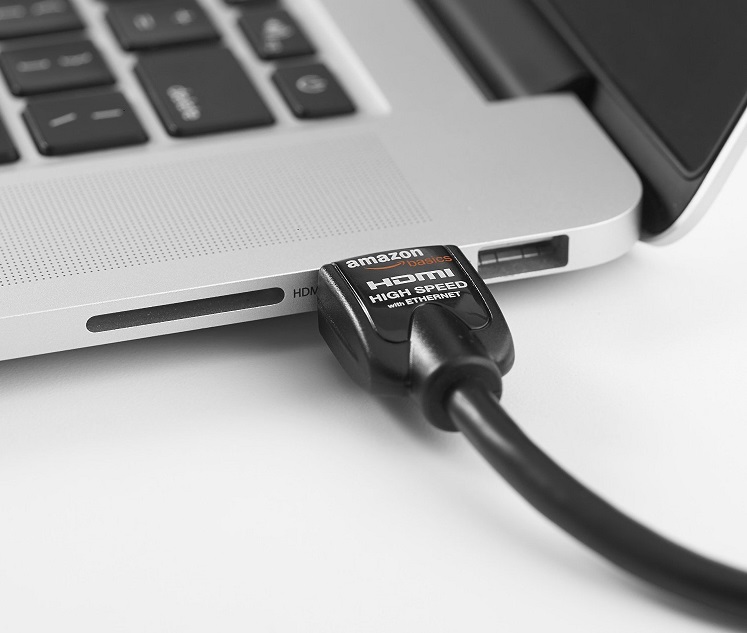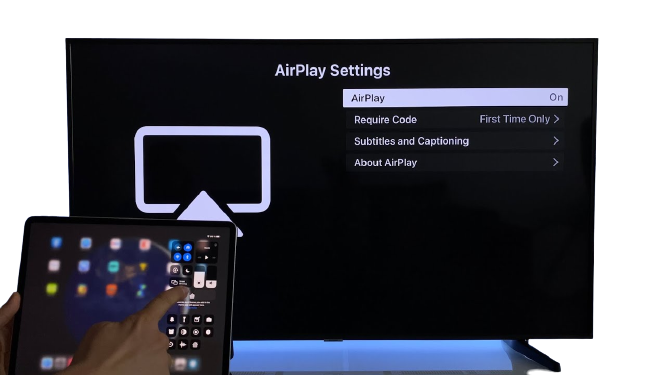When Apple released the 2016 MacBook, they took out most of the usual ports and replaced them with just a few USB thunderbolt ports. At first, this seemed like a strange choice, but now we’re used to seeing USB Type-C ports in many gadgets.
After they got rid of the HDMI port on the MacBook, connecting it to a TV became harder. Lots of people who enjoy movies or giving talks want to connect their MacBook to a smart TV for better viewing. So, if you’re trying to figure out how to do this, you’ve come to the right place. We’ll show you two easy ways to do it in this article. Make sure to read it carefully.
Outline
ToggleHow To Connect Macbook To TV?
We have got two easy methods here to discuss by which you can simply connect any MacBook to a smart TV without any issues. While one of the methods has wiring involved and might cost you a little. The other method is wireless and free, so you can try out whichever you feel most comfortable using.
1. Connect MacBook to TV using HDMI or Adapter
Using HDMI connectivity provides a simple and dependable way to link your MacBook to a television. HDMI ports are commonly found on most modern TVs and MacBooks, facilitating a smooth connection process. Follow these steps:
- Check Ports or Adapter: Confirm that both your MacBook and TV have HDMI ports, typically rectangular and labeled as “HDMI.” Examine the available ports on both your MacBook and TV. MacBook ports may include USB-C or Thunderbolt, while TVs might feature USB ports or other connectivity options. Based on Apple devices HDMI ports are not available in that case, select the appropriate adapter. For instance, if your MacBook has USB-C ports, you may require a USB-C to HDMI.
- Get the Right Cable: If you don’t have one already, purchase an HDMI cable of sufficient length to reach your MacBook and TV.
- Connect the Cable: Insert one end of the HDMI cable into your MacBook’s HDMI port and the other end into the TV’s HDMI port. or to the adapter.
- Select Input Source: Using your TV’s remote control, choose the HDMI input corresponding to the port where your MacBook is connected.
- Adjust MacBook Settings: Your MacBook should automatically recognize the TV. If not, navigate to “System Preferences” > “Displays” on your MacBook and configure the settings to mirror or extend the display to the TV.
Once connected and configured, you can enjoy your MacBook’s display on the larger TV screen, enabling easy video playback, web browsing, or presentations.
Don’t forget to optimize the viewing experience by adjusting the TV’s display settings, including resolution and aspect ratio. If issues arise, check cable connections and ensure both devices are powered on.
By employing the appropriate adapter and cable combination, you can establish a seamless connection between your MacBook and TV, even in the absence of an HDMI port. This flexibility enables you to enjoy your MacBook’s content on a larger screen, whether you’re streaming videos, delivering presentations, or engaging in other multimedia activities.
2. Connect MacBook to TV using AirPlay
For a cable-free and convenient connection, using AirPlay to connect your MacBook to a smart TV is an excellent option. AirPlay allows you to mirror your MacBook’s screen or use it as an extended display on an Apple TV or a compatible smart TV. Here’s how to set it up:
- Ensure Compatibility: Confirm that your MacBook and TV are compatible with AirPlay. Apple TV is a dedicated device for this, but some smart TVs also support AirPlay.
- Connect to the Same Wi-Fi Network: Both your MacBook and the TV need to be connected to the same Wi-Fi network. This ensures a stable and seamless connection.
- Enable AirPlay on TV: If using Apple TV, ensure AirPlay is enabled in the settings. For smart TVs, check for an AirPlay or Screen Mirroring option in the settings menu.
- Access AirPlay on MacBook: Open the menu bar on your MacBook and click on the AirPlay icon. It looks like a rectangle with a triangle at the bottom. If you can’t find it, go to “System Preferences” > “Displays” > “AirPlay Display” and select your TV.
- Select TV as AirPlay Destination: From the list of available AirPlay devices, choose your TV. You may need to enter a code displayed on the TV to establish the connection.
- Mirror or Extend Display: Decide whether you want to mirror your MacBook’s screen on the TV or use it as an extended display. Adjust the settings in “System Preferences” > “Displays” accordingly.
- Enjoy Wireless Connection: Once connected, you can now enjoy your MacBook’s content wirelessly on the TV. Play videos, share presentations, or browse the web without the constraints of cables.
- End AirPlay Connection: When done, simply disconnect by clicking the AirPlay icon on your MacBook and selecting “Turn Off AirPlay.”
Connecting your MacBook to a TV via AirPlay provides flexibility and freedom of movement, making it an ideal choice for those who prefer a wireless setup. Whether you’re streaming media or giving a presentation, AirPlay ensures a seamless connection between your MacBook and the TV.
3. How to Wirelessly Connect MacBook to TV
To wirelessly link your MacBook with a smart TV using AirPlay, follow these steps:
- Ensure both your MacBook and smart TV are turned on and connected to the same Wi-Fi network.
- On your MacBook, open the Apple menu and go to System Settings.
- Navigate to Control Center and click on the Screen Mirroring icon.
- Select your smart TV from the list (you might need to enter a four-digit code on your MacBook).
- To mirror your MacBook’s display on your TV, click the Screen Mirroring icon again. For a dual-screen setup, choose the Use As Separate Display option.
- To end the session, select Stop Mirroring from the Screen Mirroring options.
Conclusion
In conclusion, connecting your MacBook to a TV opens up a world of possibilities for entertainment and productivity. Whether through the versatile HDMI, adaptable adapters without HDMI, or the wireless convenience of AirPlay, this guide has equipped you with the knowledge to effortlessly integrate your devices.
FAQs:
What cables do I need to connect my MacBook to my TV?
Depending on your MacBook model and TV inputs, you may need an HDMI cable, USB-C to HDMI adapter, or Mini DisplayPort to HDMI adapter.
Can I mirror my MacBook screen to my TV without using AirPlay?
Yes, if your TV supports screen mirroring, you can often do this directly from your MacBook’s settings. Look for options like “Screen Mirroring” or “Cast” in your TV’s menu.
Are adjustments needed on MacBook or TV post-connection?
Depending on your desired use (e.g., extending or mirroring displays), you may need to adjust display settings on your MacBook or TV to optimize the viewing experience.
Can I stream content from specific apps on my MacBook to my TV?
Yes, many streaming services and media players have built-in support for casting or AirPlay, allowing you to stream content directly from your MacBook to your TV.



